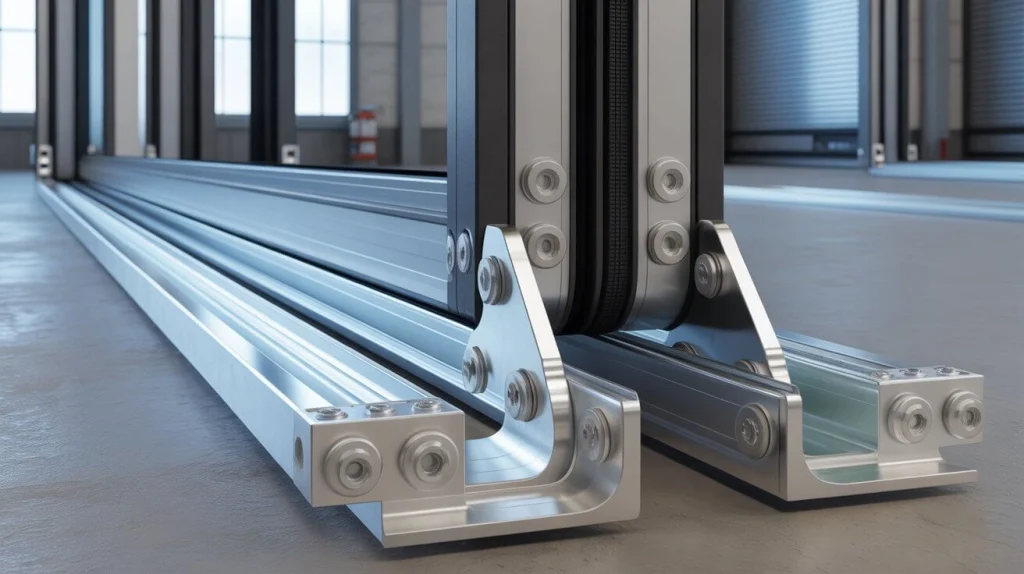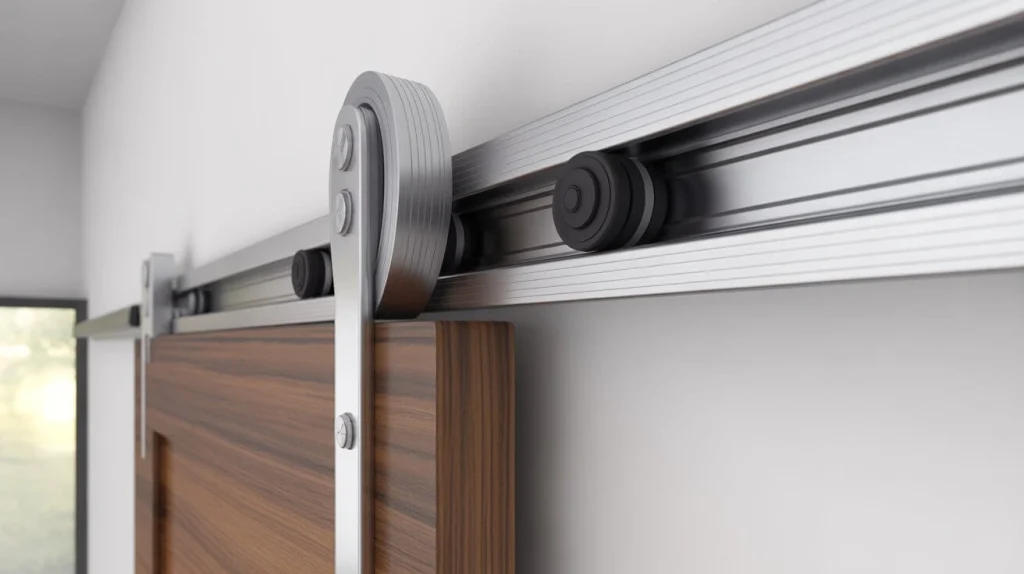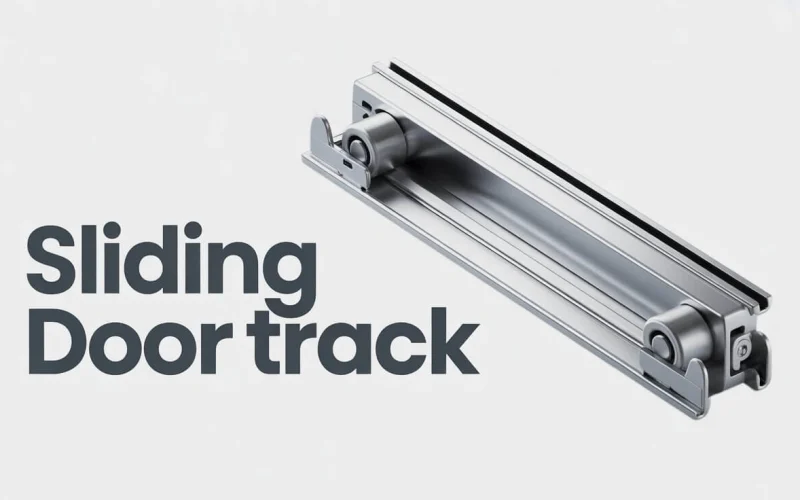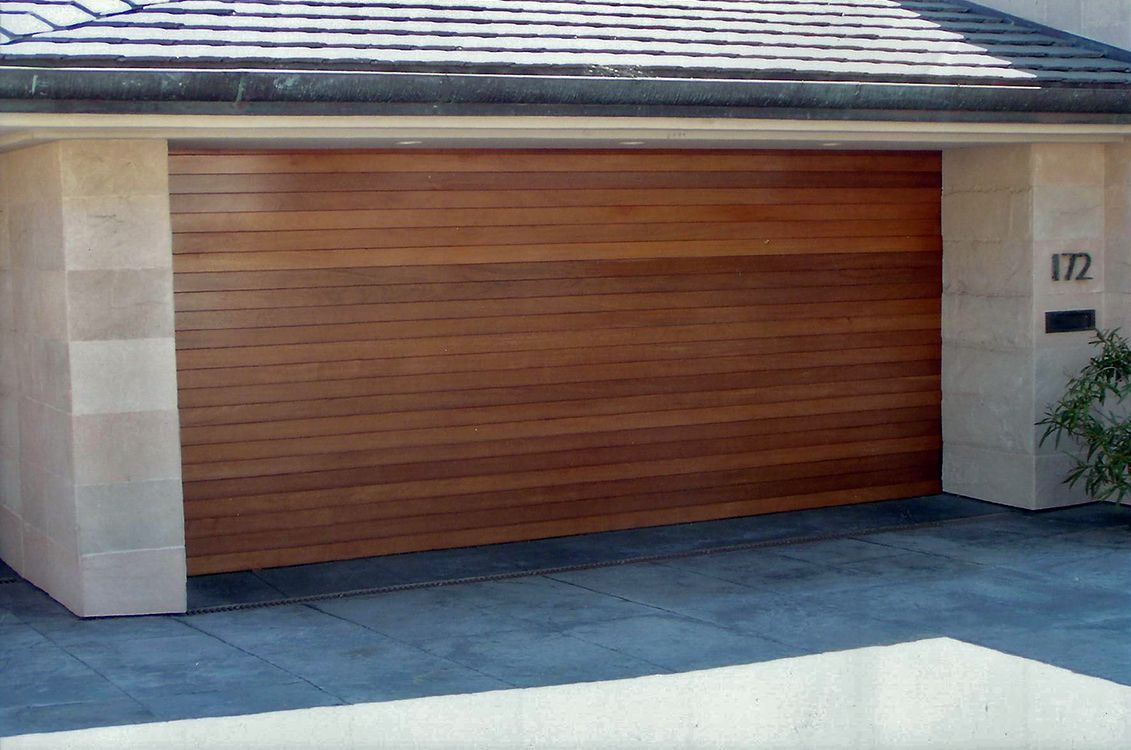Sliding doors are more than just space-saving solutions—they can completely transform the look and functionality of your home or office. But as an experienced garage repair doors expert, I’ve seen countless cases where homeowners struggle because they underestimated the importance of the sliding door track. Choosing the right track can mean the difference between a smooth, silent sliding door and one that squeaks, sticks, or even comes off its rails.
In this guide, I’ll walk you through everything you need to know about sliding door tracks, including types, installation tips, maintenance, and real-life examples that show why picking the right track matters.

Content
Understanding Sliding Door Tracks
At the heart of every sliding door system is the sliding door track. Think of it as the road your door travels on. A high-quality track ensures your door moves smoothly, reduces wear and tear on rollers, and makes your space safer.
Types of Sliding Door Tracks
There are several types of tracks to suit different door designs and usage scenarios:
1. Sliding Door Box Tracks
Box tracks are enclosed channels that protect the rollers and guide the door. They’re perfect for high-traffic areas where durability is key. I once installed box tracks in a commercial office building where the sliding doors were in constant use, and the results were fantastic—no sticking or noise for over three years.
2. Sliding Door Flat Tracks
Flat tracks are exposed rails that offer a minimalist look, ideal for modern homes or interior sliding doors. While they require regular cleaning to avoid debris buildup, they are much easier to install in smaller spaces.
3. Heavy-Duty Tracks

For larger doors, such as garage or patio doors, heavy-duty sliding door track systems are a must. They can carry heavier doors without bending or warping, ensuring long-term smooth operation.
Factors to Consider When Choosing the Right Sliding Door Track
Selecting the right track isn’t just about style—it’s about functionality, safety, and long-term durability. Here are some key factors I always advise homeowners to consider:
Door Type
Different doors require different tracks. For instance, a glass sliding door will need a track designed to support its weight without compromising stability. Wooden doors often need robust tracks that can handle expansion and contraction due to temperature changes.
Weight Capacities
Always check the track’s weight rating. Installing a track that can’t handle your door’s weight is a recipe for disaster. In one real-life scenario, a homeowner tried installing a standard track under a 250-pound barn-style door. Within a week, the track bent, causing the door to derail. Upgrading to a heavy-duty track solved the problem completely.
Space Considerations
Measure the space above and around your sliding door. Some tracks, like box tracks, require a little more overhead clearance, while flat tracks are great for tight spaces.
Hanger Styles
Tracks work hand-in-hand with hanger systems that attach the door to the track. I’ve found that choosing a compatible hanger style ensures smooth sliding and reduces maintenance needs over time.
Installation Tips for Sliding Door Tracks

Installing a sliding door track can seem intimidating, but with the right approach, it’s manageable even for DIY enthusiasts:
- Measure Twice, Install Once: Always double-check measurements to ensure the track fits perfectly.
- Level is Critical: Even a slight tilt can cause doors to stick or derail. Use a spirit level before securing the track.
- Use Quality Rollers: The track is only as good as the rollers that glide on it. Opt for smooth, durable rollers to minimize noise and friction.
- Secure the Track Properly: Use strong screws and anchors, especially for heavy doors.
Maintenance Tips for Longevity
Regular maintenance extends the life of your sliding door track and keeps your doors running smoothly. Here’s what I recommend:
- Clean Regularly: Remove dust, dirt, and debris from the track to prevent roller wear.
- Lubricate Rollers: Apply silicone-based lubricants every 3–6 months. Avoid oil-based lubricants that attract dust.
- Inspect for Wear: Check the track and rollers periodically for signs of bending or damage. Replace parts as needed.
Real-Life Case Study: Sliding Door Track Upgrade in a Garage
Let me share a case from my experience. A client had a 12-foot sliding garage door on a standard flat track. Over time, the door started sticking and making loud noises whenever it was opened. After inspecting the system, I recommended switching to a heavy-duty sliding door track system with upgraded rollers.
The process included:
- Removing the old flat track and installing a reinforced steel track.
- Adjusting hanger styles to match the new track specifications.
- Performing a full maintenance check on the rollers and lubricating all moving parts.
Result? The garage door now slides effortlessly, noise-free, and handles heavier loads with ease. The client commented that it was like having a brand-new door, and it made daily use stress-free.
Choosing the Right Sliding Door Track: Final Thoughts

Choosing the right sliding door track is more than just picking a rail—it’s about safety, durability, and long-term satisfaction. Whether you’re upgrading a garage, office, or interior sliding door, consider the door type, weight, space, and hanger styles carefully.
A well-chosen track system can make your sliding doors a joy to use, reduce maintenance headaches, and even elevate the aesthetic of your home. By following the tips above, you’ll ensure your sliding doors glide smoothly for years to come.for more information visit our website https://garagerepairdoors.com
FAQs
How are Japanese sliding doors called?
Japanese sliding doors are called shoji or fusuma, traditional doors on sliding door tracks in Japanese homes.
What does byobu mean?
Byobu refers to a folding screen, often used as a decorative partition with sliding elements.
What is a shoji door?
A shoji door is a Japanese sliding door made of wood and paper, gliding on sliding door tracks.
What is a multi-sliding door?
A multi-sliding door consists of multiple panels that slide on tracks for wide openings and space-saving design.

Lena lives and breathes garage doors. She’s the one to turn to when you need insights on keeping your garage secure and functioning smoothly.





